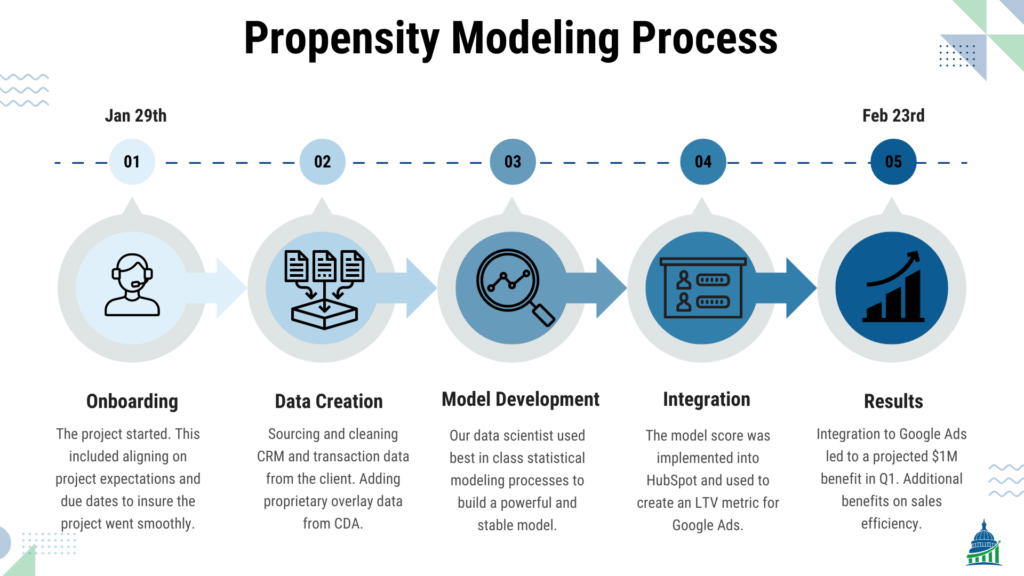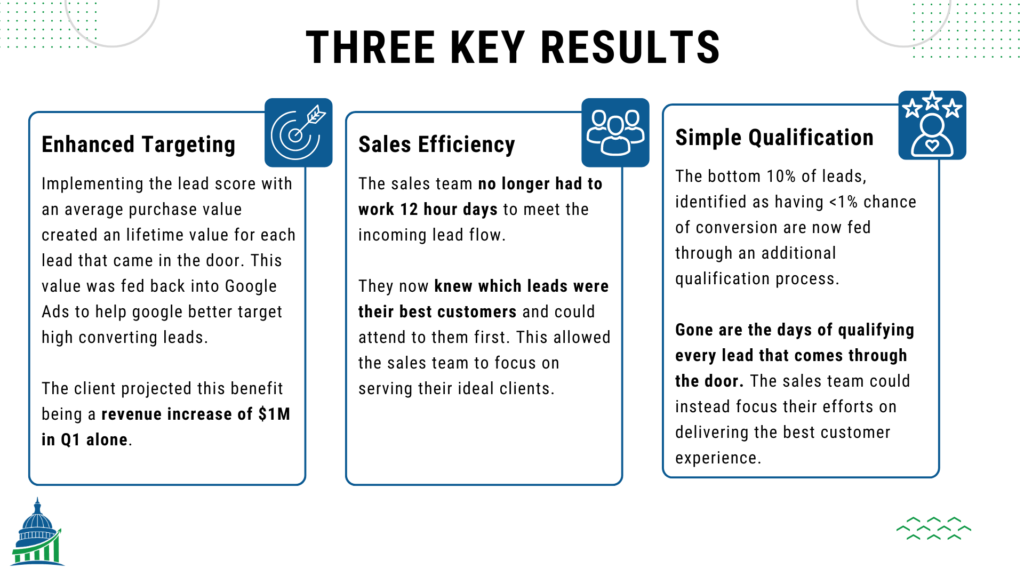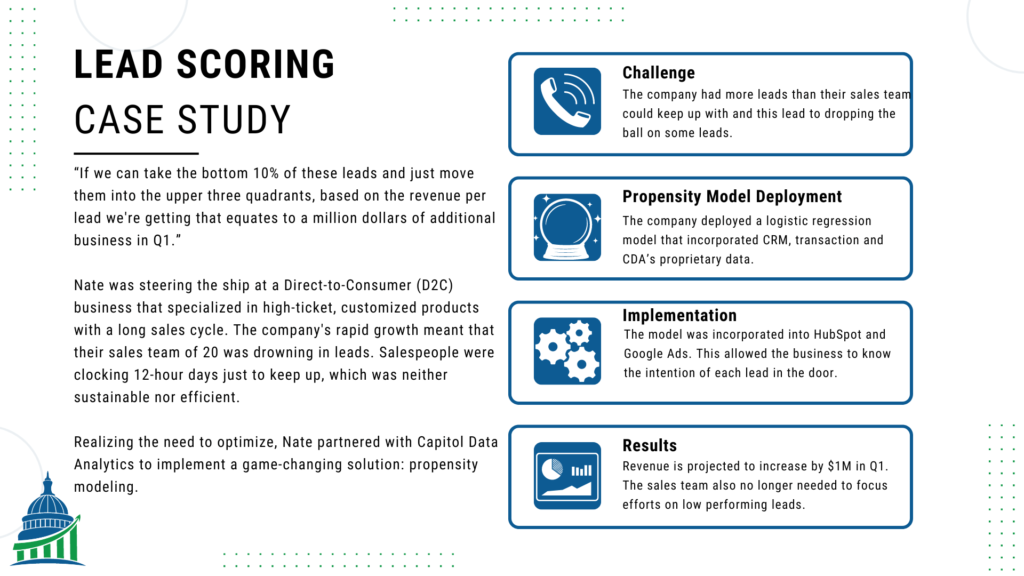Case Study: How Propensity Modeling Boosted a D2C E-Commerce Business by $1M in Q1

Nate was steering the ship at a Direct-to-Consumer (D2C) E-commerce business that specialized in high-ticket, customized products with a sales cycle of 3-4 weeks. The company’s rapid growth meant that their sales team of 20 was drowning in leads. Salespeople were clocking 12-hour days just to keep up, which was neither sustainable nor efficient.
Realizing the need to optimize, Nate partnered with Capitol Data Analytics to implement a game-changing solution: propensity modeling. Propensity modeling isn’t just a buzzword—it’s about predicting customer behaviors to identify who’s likely to buy and who needs more nurturing.
the steps Capitol Data Analytics used to help Nick:

- Onboarding: CDA’s team makes sure you know exactly what to expect and the timeline to expect the pieces to delivered in. This helped Nate feel comfortable that he would see results quickly.
- Data Creation: We started by merging Nate’s CRM data with transaction histories to create a robust customer dataset. This included details like zip codes, email addresses, and responses from their website’s intake form. Additionally, we added CDA’s proprietary data to create a more robust data set.
- Model Development: Within a week, we built and refined a predictive model that differentiated leads based on their propensity to purchase. The top 10% of leads had a conversion rate of 12.5%, while the bottom 10% converted at less than 1%.
- Integration: The next step was integrating this model directly into Nate’s CRM. Custom scoring fields were added to HubSpot, which scored each lead by their probability to convert. This integration was extended to Google Ads, enhancing lead targeting by using the Lifetime Value metric calculated from our lead score and the average customer value.
- Results: The next section will go into the results delivered in more detail.
Results

The deployment of the propensity model delivered three key outcomes:
- Enhanced Ad Targeting: By feeding our LTV calculations back into Google Ads, the system began to optimize ad targeting. This strategic shift not only reduced wasteful ad spend but was projected to increase sales by $1 million in the first quarter by replacing the least performing leads with more promising ones.
- Efficiency in Sales: The sales team now focuses on leads most likely to convert into high-value customers. This focus shift eliminated the need for intensive lead qualification, freeing up valuable time and resources.
- Streamlined Qualification: The bottom 10% of leads, those requiring additional nurturing, were the only ones routed through an extended qualification process. This streamlined approach significantly improved the sales workflow for the remaining 90% of leads.
Summary
In conclusion, Nate’s strategic deployment of propensity modeling at his Direct-to-Consumer E-commerce business serves as a compelling example of how data-driven strategies can significantly enhance operational efficiency and profitability. By partnering with Capitol Data Analytics, the company not only streamlined its lead qualification process but also dramatically improved its advertising effectiveness. This targeted approach allowed them to reallocate resources more effectively, transforming the least promising leads into high-value opportunities. As a result, the company projected an impressive $1 million increase in sales for the first quarter, underscoring the profound impact of integrating advanced data analytics into everyday business practices.
